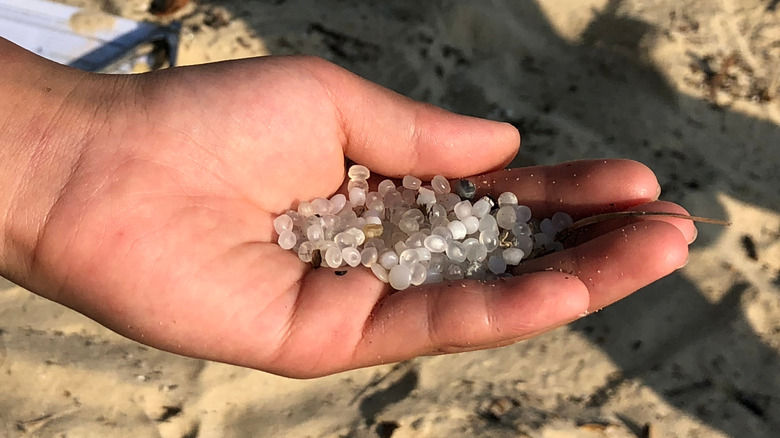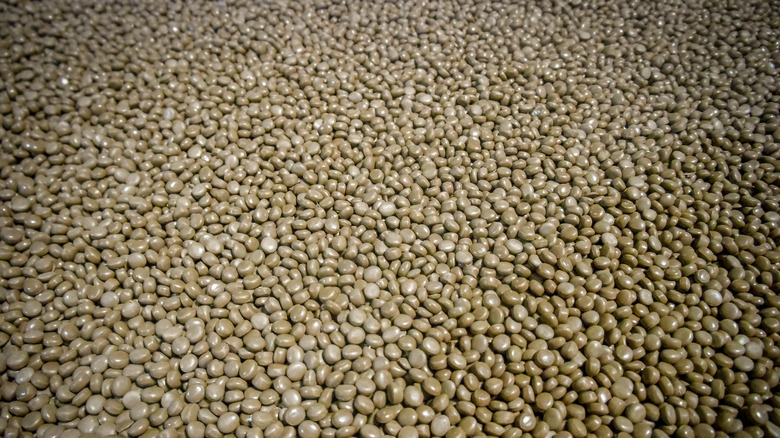The Horrific Toxic Pollutant You've Never Heard Of
"Nurdles." Sounds cute, right? Kind of like a whimsical Dr. Seuss creature that pops out of a jack-in-the-box and rhymes to children about breakfast. But no. Nurdles would be more accurately named "Tiny Plastic Murder Orbs" that muck up an already dangerously polluted ocean. That's right, it's "Blame the Humans" hour, starring your favorite contestants: everyone.
Per the Plastic Soup Foundation, about 350 million pounds of nurdles wind up in the ocean every year: tiny "pre-production plastic pellets" typically converted into all sorts of products. That's 23 billion nurdles every day. Made of fossil fuels like any other plastic, the lentil-sized balls come in a variety of poly-chemical flavors: polyethylene, polypropylene, polystyrene, polyvinyl chloride, and more, as The Guardian says. Naturally, these flavors aren't good for fish and other wildlife that mistake them for food. Nurdles make their way along the food-chain back to their makers — us — and poison everything along the way, including larger sea mammals like dolphins. And you know what? They're only the second-largest source of microplastics on Earth.
In 2021, 87 containers of nurdles (1,680 tons) were accidentally dropped in the ocean near Sri Lanka, causing 20,000 families to stop fishing and lose their jobs. A UN Environmental Advisory Report called the spill, dubbed the "X-Press Pearl Maritime Disaster," the "worst catastrophe in [Sri Lankan] maritime history." Those nurdles that washed ashore formed two-meter-deep heaps (6.5 feet). Whoever gave these things such a harmless name: We need to have a talk.
Billions of toxic 'rafts' for bacteria
Nurdles are not merely sinister, toxic, animal-choking beads. Oh, no. They're "rafts" for other toxins. They circulate in the ocean — and will do so for decades — collecting bacteria. Reason being, as The Guardian continues, plastic materials are hydrophobic — they repel water — which means that bacteria can easily hang out on their surfaces. These pollutants "can be a million times more concentrated on the surface of pellets than in the water." So those giant nurdle piles we mentioned coming ashore in human-height heaps? Try not to touch them while strolling on the beach.
Or, strap on some gloves and get cleaning. This is precisely what organizations like the Plastic Soup Foundation, the Ocean Blue Project, and Nurdle Hunt are doing, as well as trying to make people aware of Earth's least-known toxic pollutant. These sites and others have concrete solutions for stemming the nurdle tide. The Ocean Blue Project offers volunteer opportunities, The Plastic Soup Foundation lists preventative measures that average consumers can take, and Nurdle Hunt drafted a supply chain solution.
As The Guardian rightfully points out, the blame for so many oceanic nurdles falls at the feet of the plastics industry. At the very least, one Texas plant in 2019 was fined $50 million for a nurdle spill that violated the Clean Water Act.

